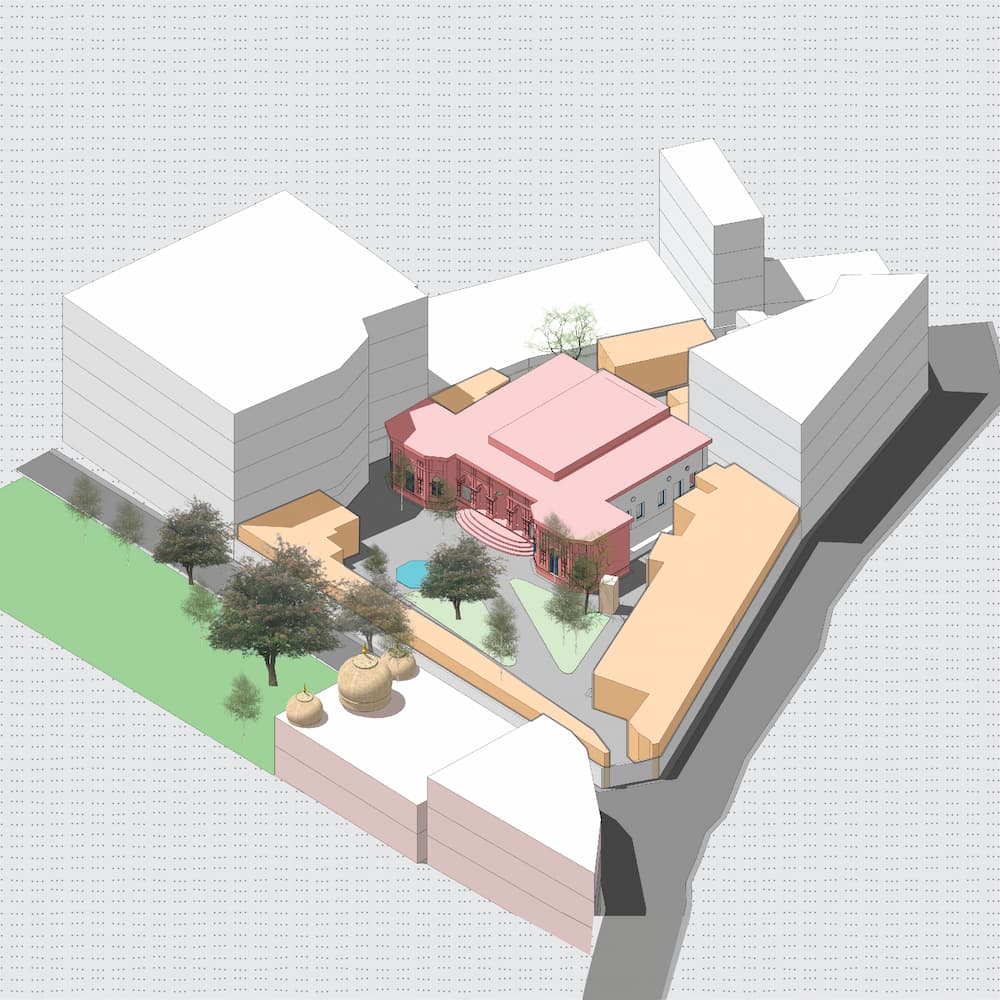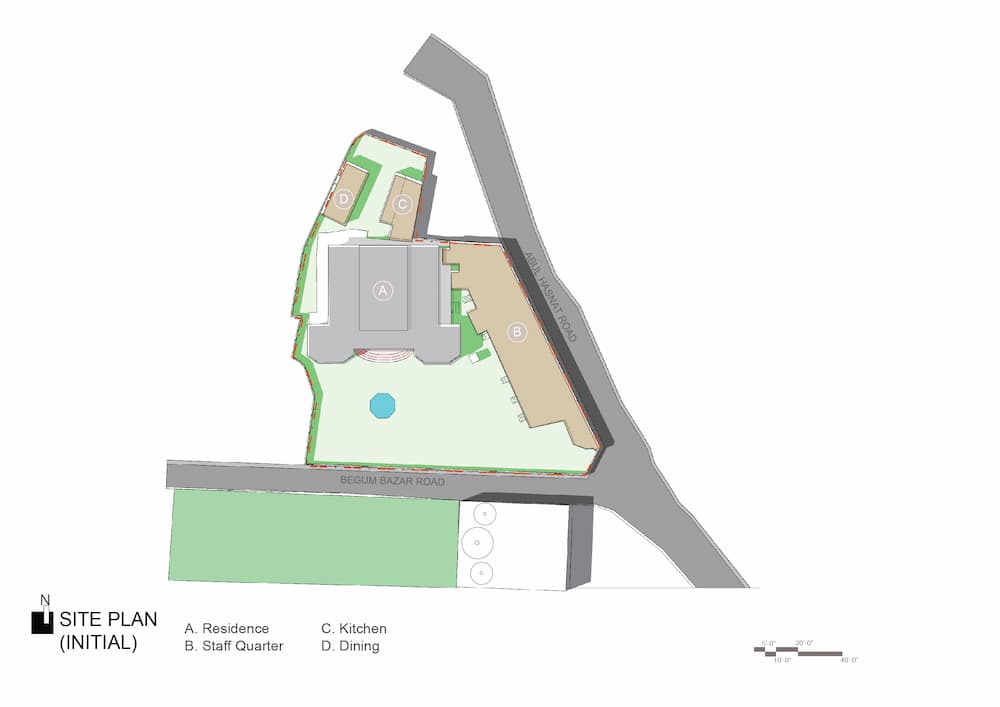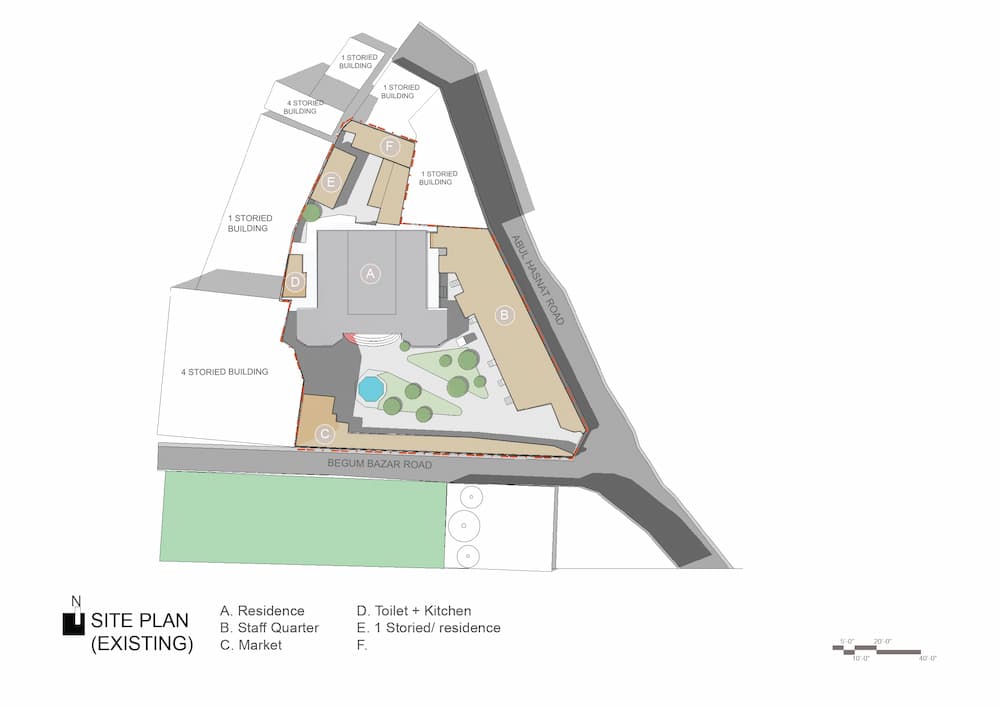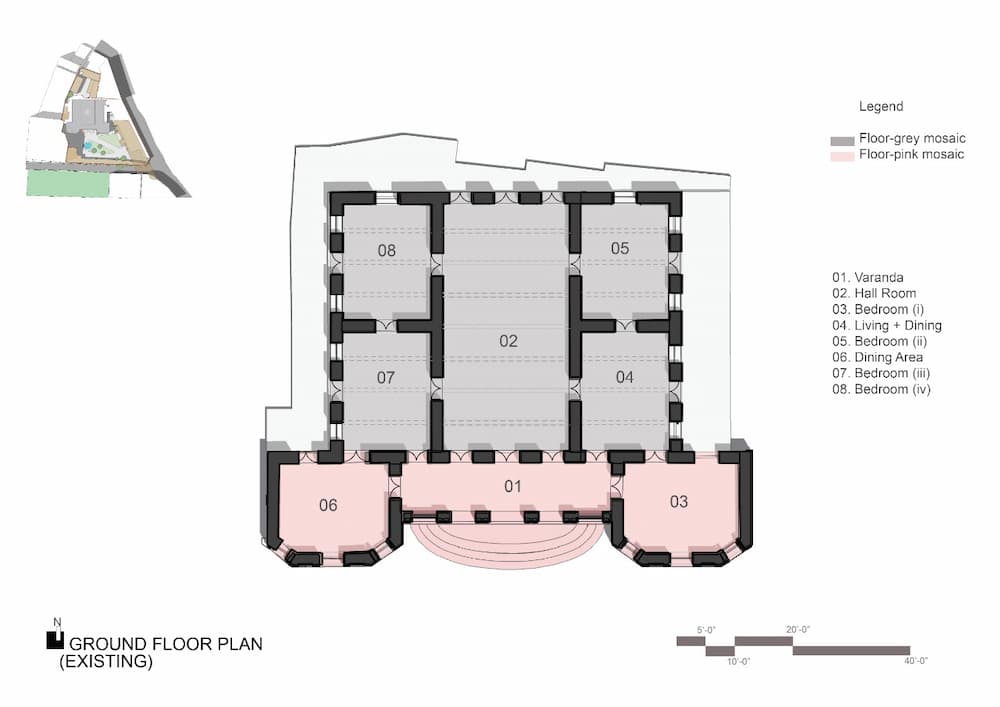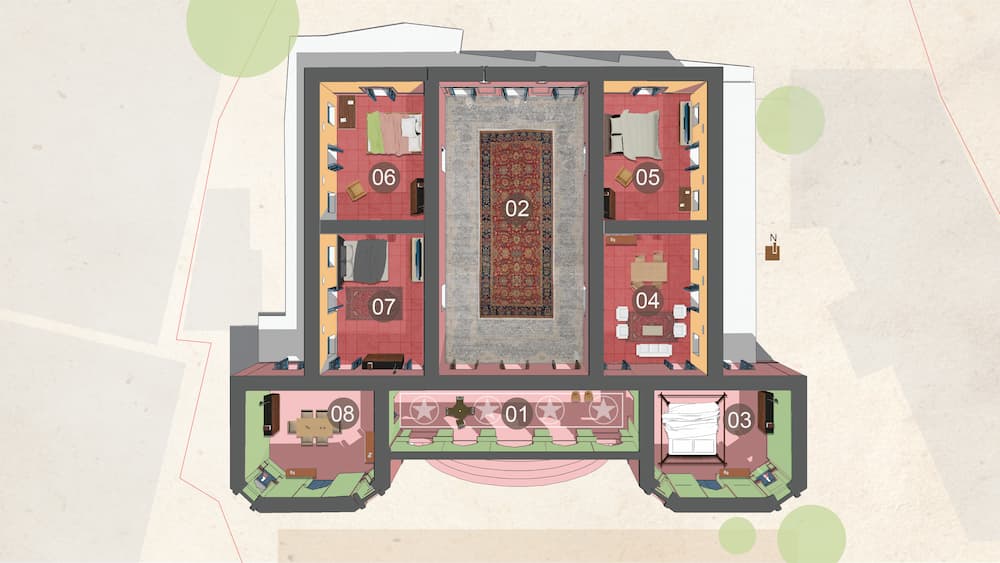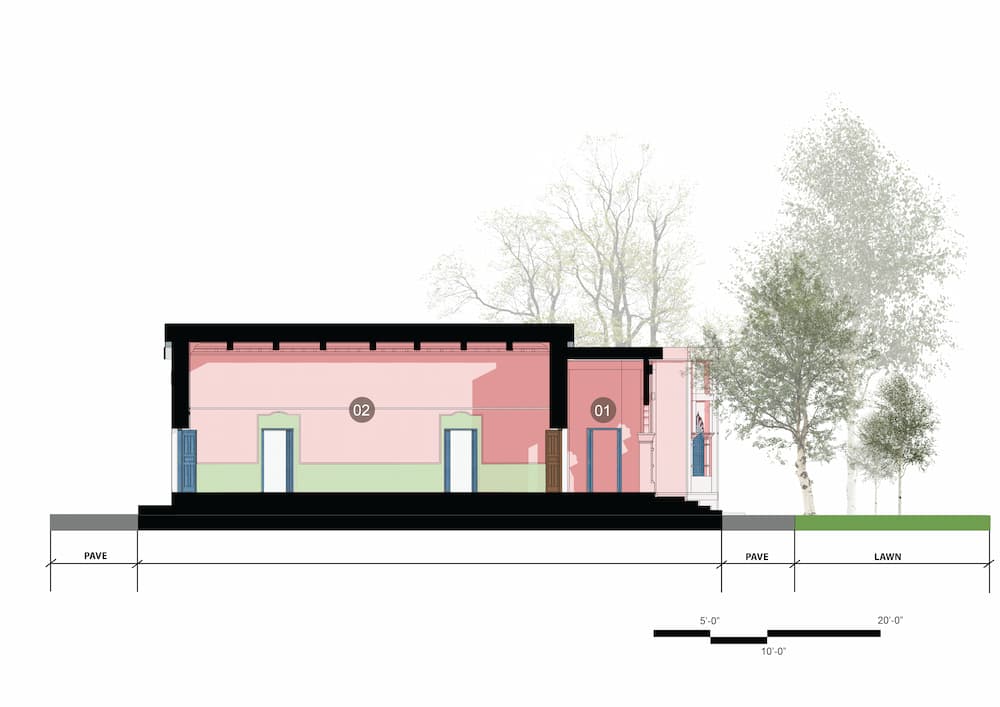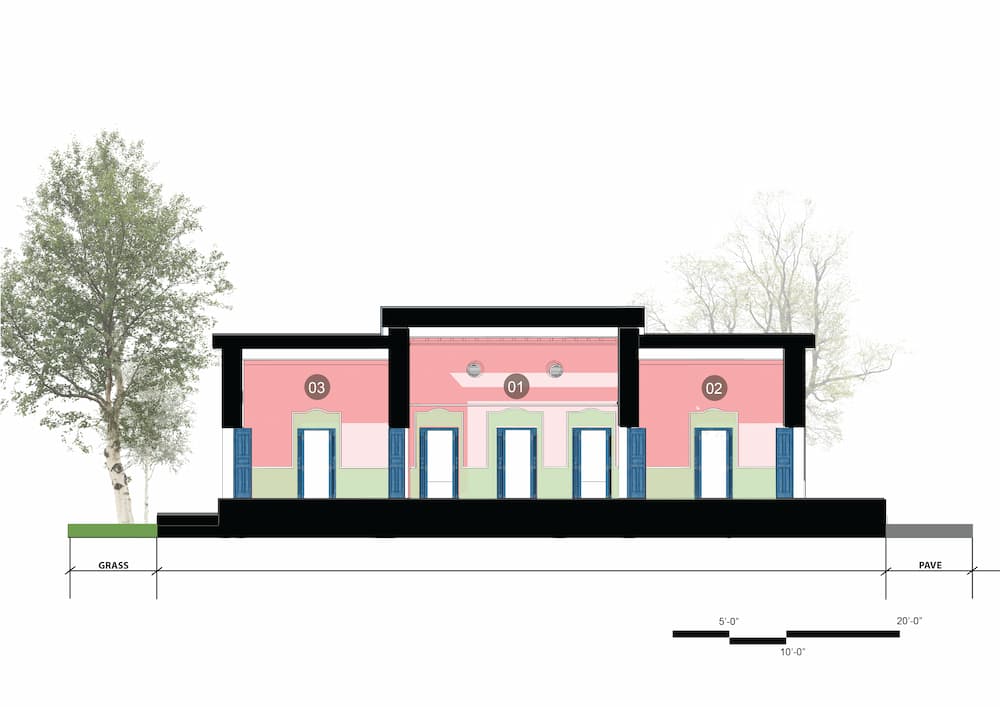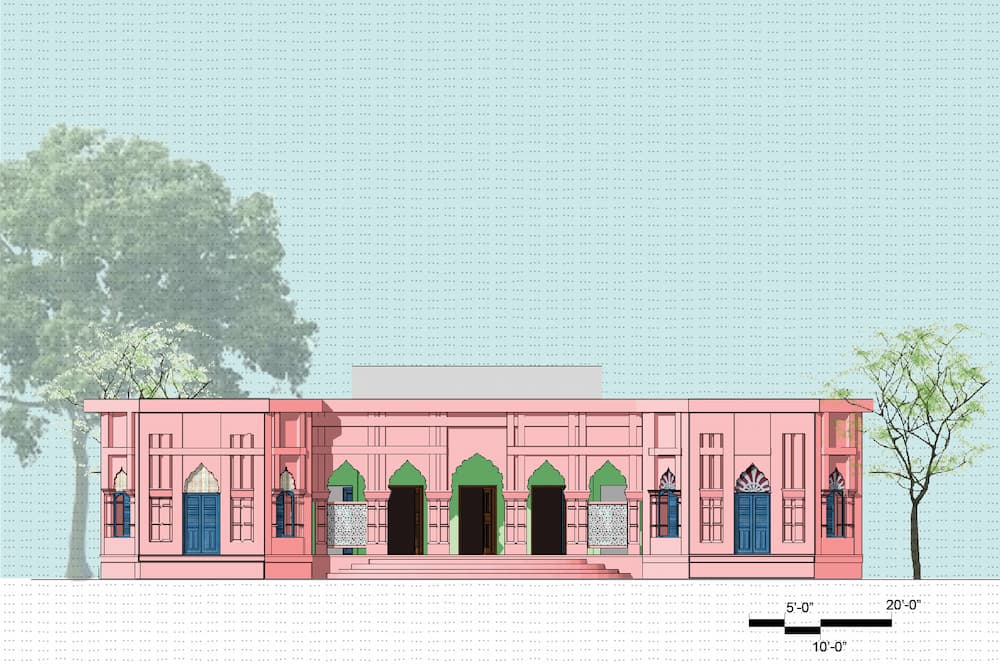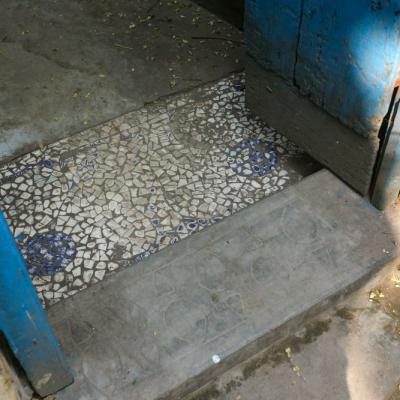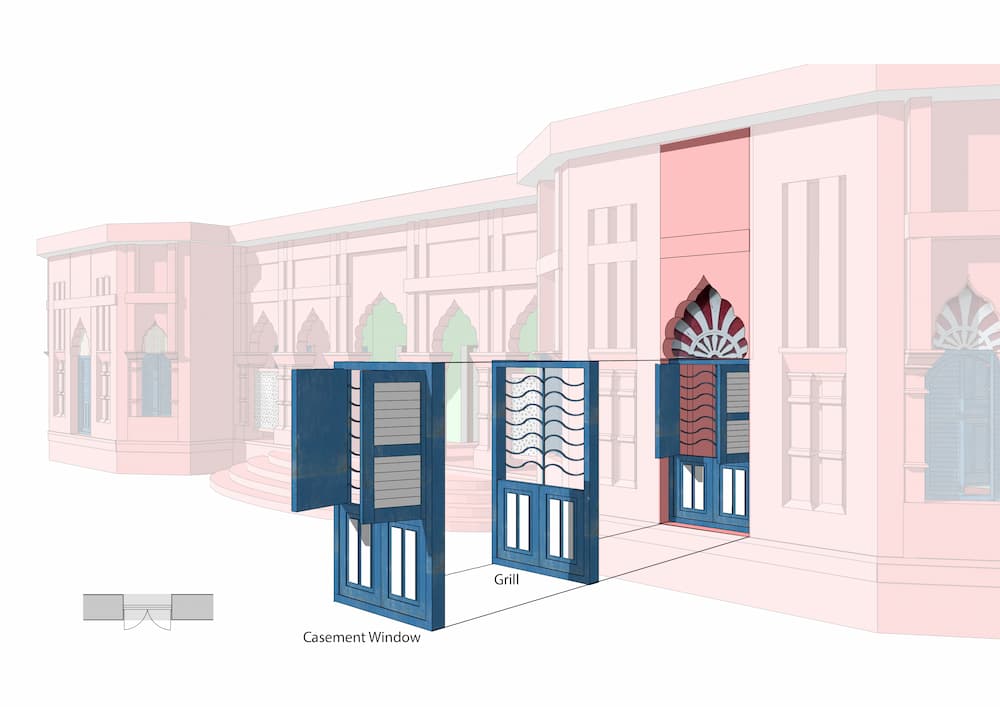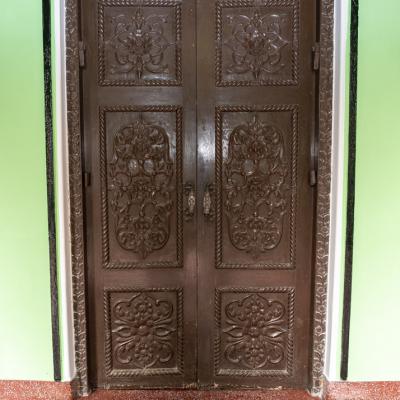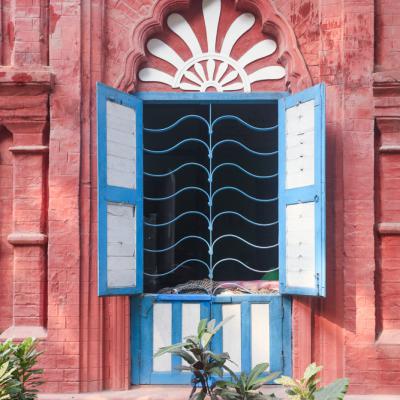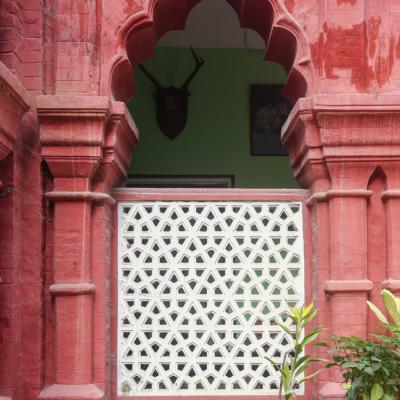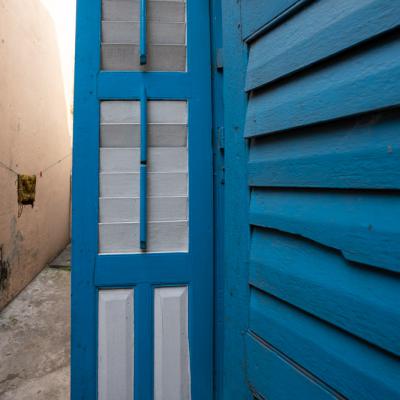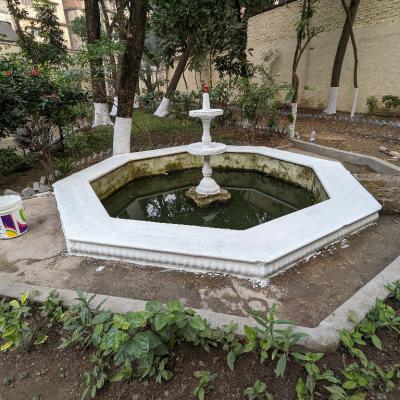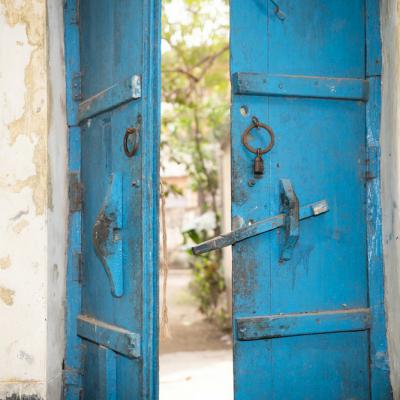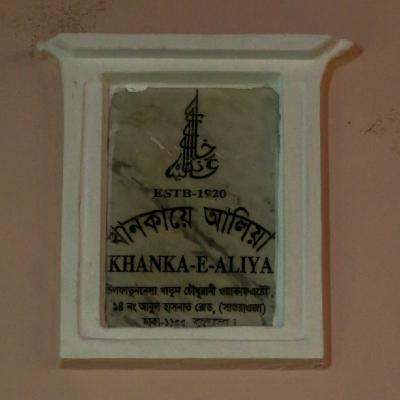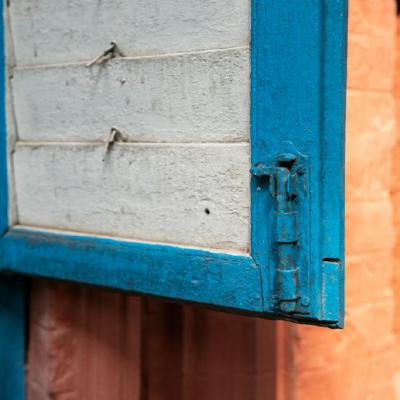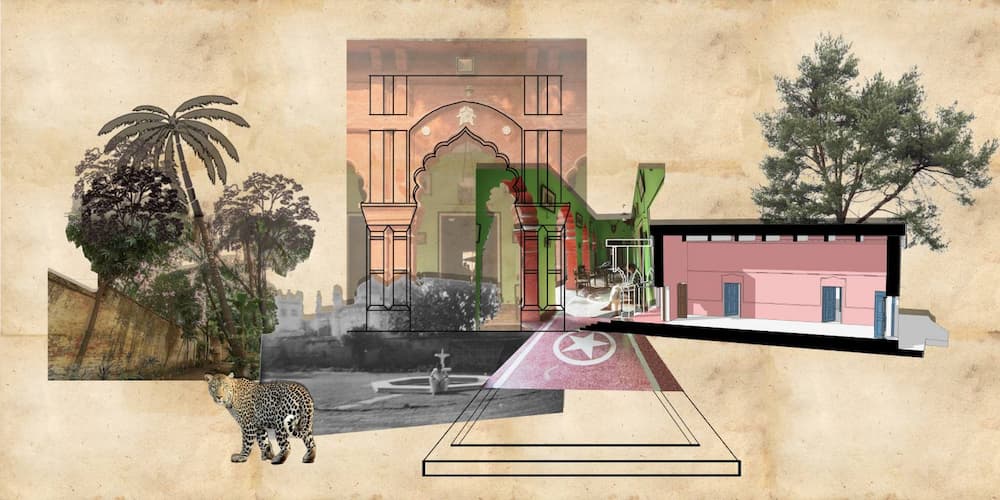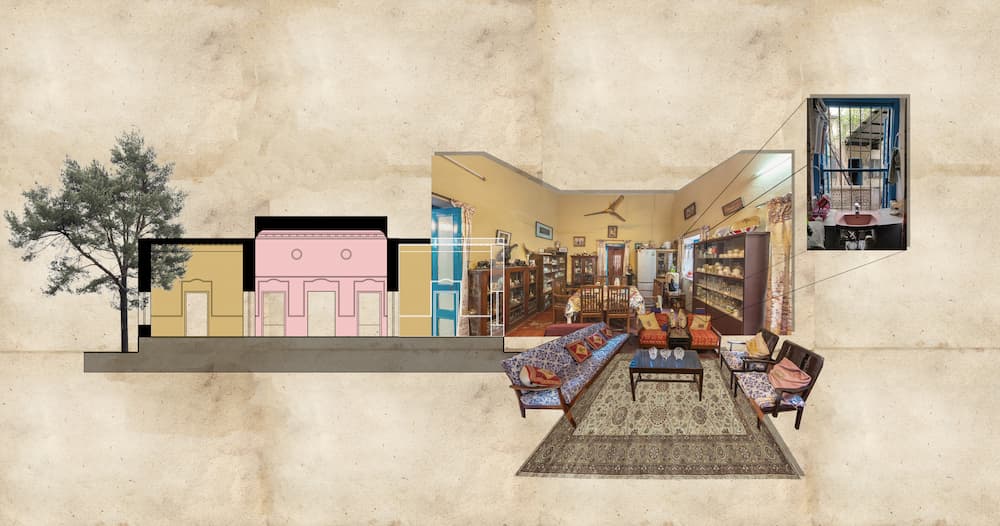Haturia House
Architecture
This page contains architectural drawings of the house in its surrounding context, the floor plans, use of spaces, section, elevation and other details. Also, there are some abstract visual representations of the stories of special features through collage drawing.
Present surroundings
The house, built around 1920, is also called ‘Haturia house’ which is named after the zamindari area in southern Bangladesh where the family had an estate. The owner and builder of the house was a member of the then Indian Civil Service, and a prominent member of the old Dhaka elite. Known as ‘Baghbari’ (tiger house) this house is situated in the dense urban fabric of old Dhaka. The famous Sat Rawja mosque is situated on the south, and the east side is the busy Abul Hasnat Road with shops and restaurants.
View of the house in surrounding context
Transformation of the surrounding
There has not been much change in the use of spaces within the layout of the house. At present, both the floors have unused or empty bedrooms, some rooms are also used as store rooms for keeping belongings of the previous residents.
Ground floor plan 1920
Legend: 1.Verandah, 2.Living Area + Family space, 3.Bedroom of the original Owner, 4.Bedroom, 5.Bedroom, 6.Bedroom, 7.Bedroom, 8.Bedroom
Ground floor plan 2022
Legend: 1.Entry Verandah, 2.Spiritual space, 3. Bedroom of the original Owner, 4.Living area + Dining room, 5.Bedroom, 6.Bedroom, 7.Bedroom, 8.Living area + Dining room
Use of spaces
Use of spaces 1920
Use of spaces 2022
Views through the building
Exterior views of the house
View from south
Details of the house
Materials
The house has been built with simple materials with cement floor finish in most cases, but in some places, different color mosaic floors were used. For the special design for the owner’s room and verandah, masons were brought from Kolkata.
Windows and openings
One of the unique features of the house is its blue wooden casement windows. All the windows have patterned grills with wooden frames. The long windows have two vertical partitions with separate grills and frames.
Window details
Special features
There are some antique features in the house which reflect the unique characteristics of construction and lifestyle of the early times.
Artistic representation
Exploring the house
A heritage building need not be a monument or landmark building; it can be representative of an epoch or period in the history of the city in many ways. Through this project, we have captured various perspectives in the form of virtual tours, timelines, stories, photographs, architectural features and locations.
Use the buttons belows to navigate to the details pages.

